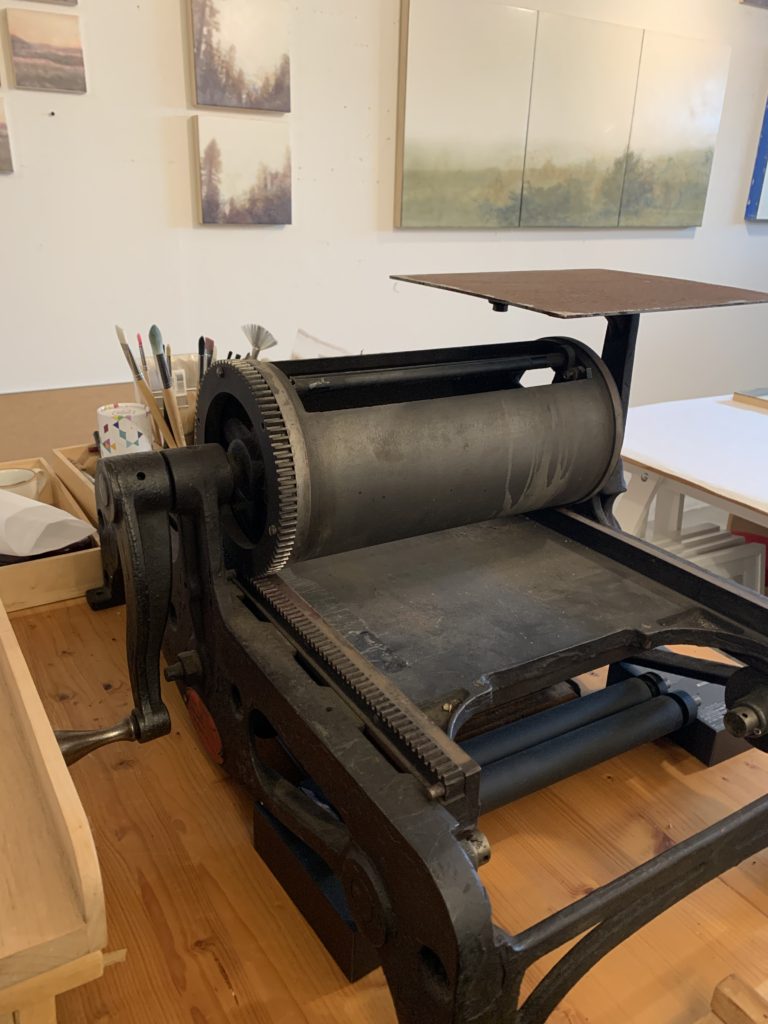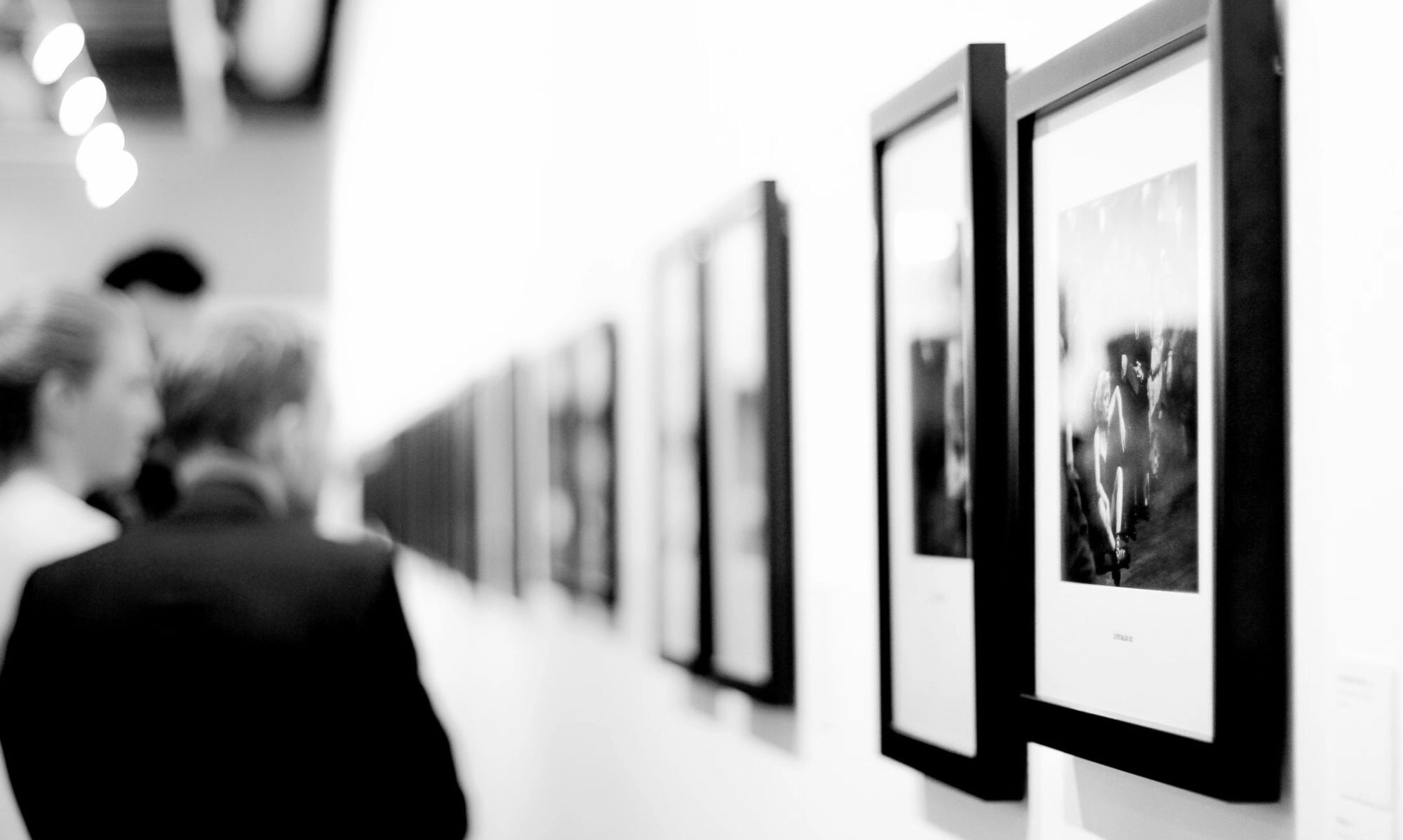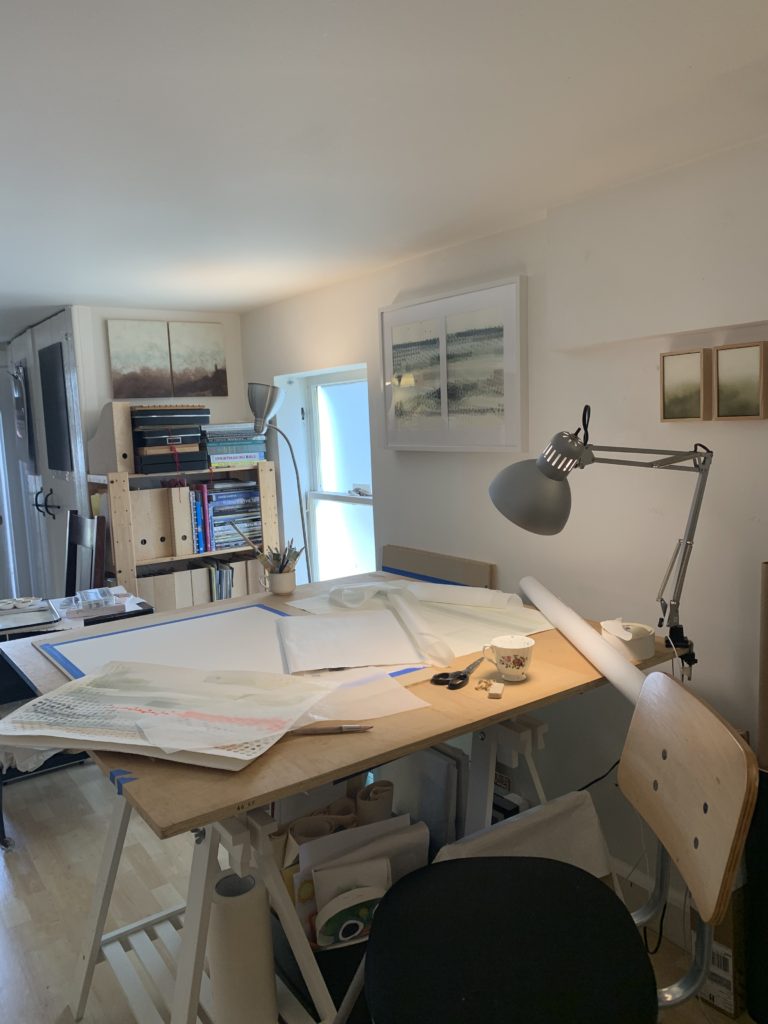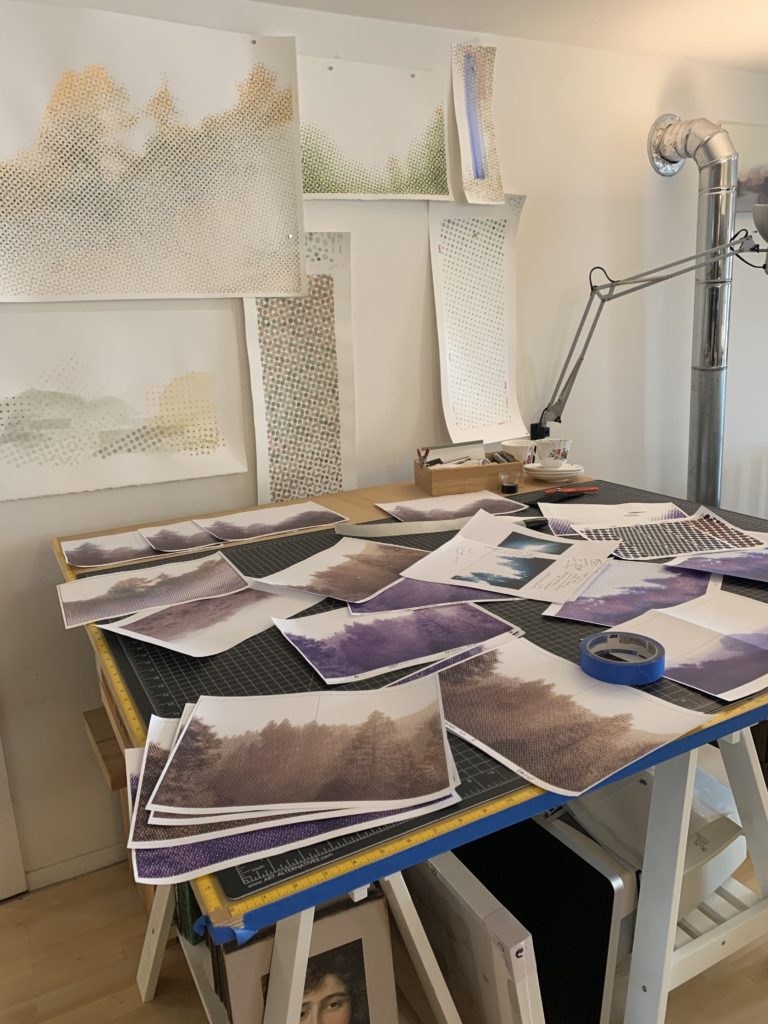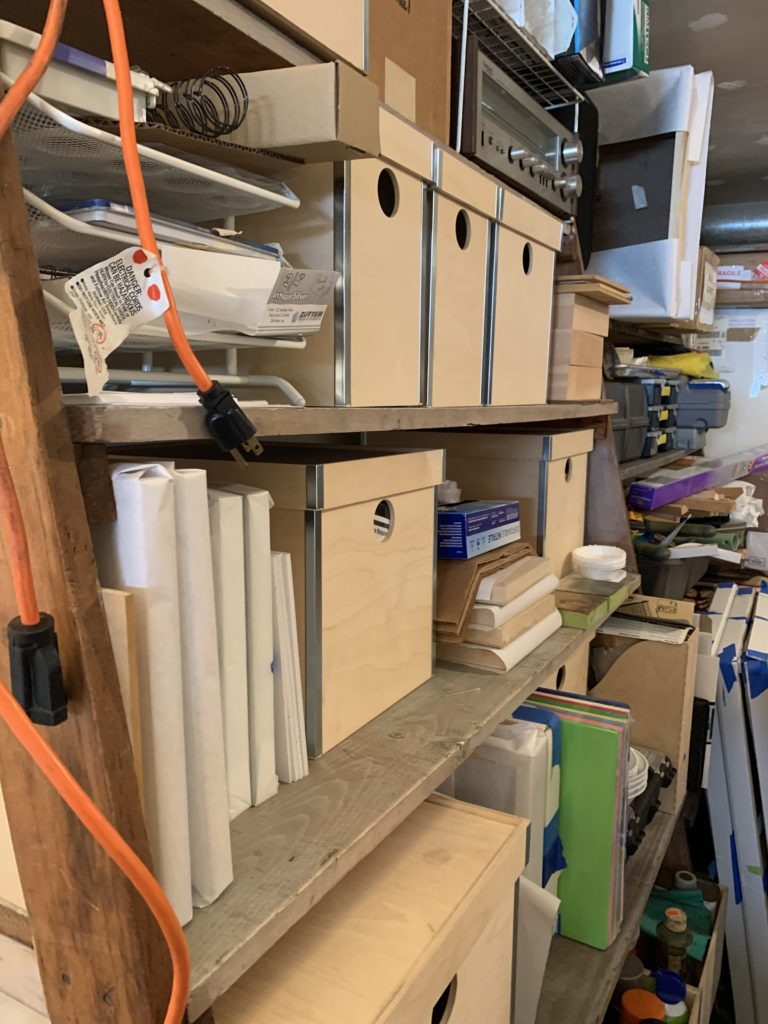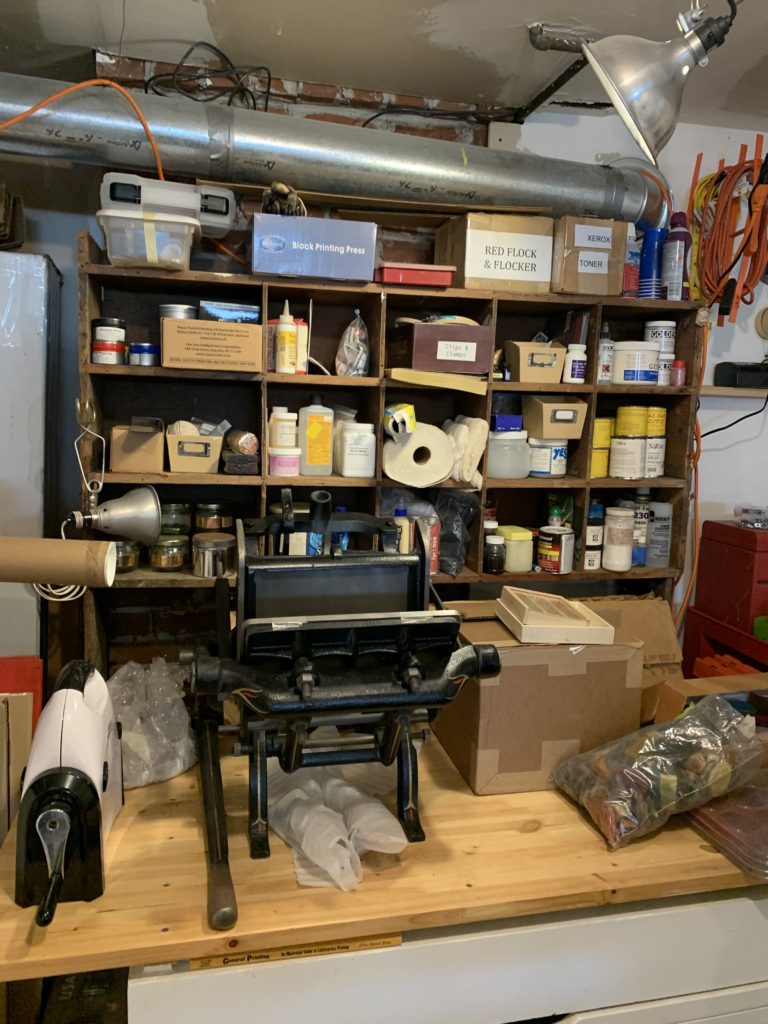31 Women – March 22nd: Karen Gallagher Iverson
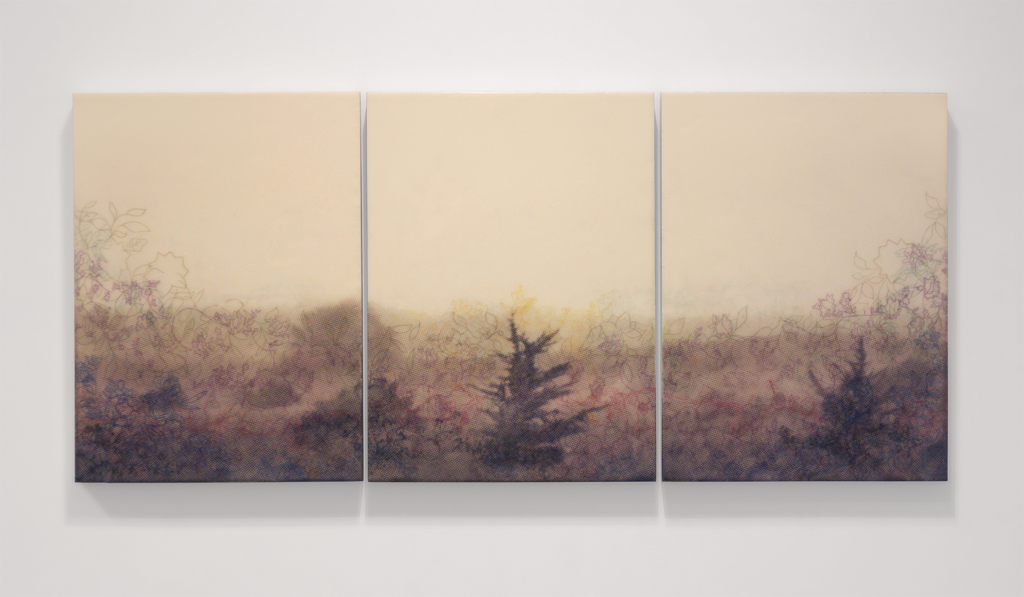
Gilded Dunes, Bodega Bay in Crimson, 2019
Pochoir and drawn colored pastel on wax on 3 panels
An Interview with Karen Gallagher Iverson

MKM: Tell me about your childhood, where did you grow up? Were you always creative?
KGI: I was born in Queens NY, within a very large extended family, mostly based throughout the five boroughs of NYC. We moved upstate to a commuter area when I was a kid. My mom always drew and painted and easily took on most any other creative craft she found interesting. Including her intense knitting habit today. Art supplies, and “the good watercolor paper” were always around and waiting for us kids to make something. I was extremely lucky to attend also a public school district that had a robust arts program. Something I didn’t fully appreciate then, and recognize as being even more significant now that I’m a parent in the Oakland Unified School District. It was easy to be creative when you didn’t have to try too hard to gain access. Both at home and in school. We had a kiln in our elementary school, welding and wood shop in middle school, dark room photography in high school. It’s amazing to look back on it.
MKM: Why did you pursue art?
KGI: At first I didn’t. I wanted to work in scientific illustration as early as the 6th grade, but was advised by my academic counselors that that field was dwindling, and suggested to become a nurse – which is a good field for women after all. That suggestion seemed absolutely ridiculous to me. Looking back I should have been directed toward graphic design. I originally went to college for Archeology and Anthropology, with a minor in Studio Arts (quickly a double major, then a complete switch in major to Studio Arts). My first apartment in my early 20s caught fire and burned down. I realized after fleeing a burning building, after the frenzy of trying to escape, that what I was studying in the ground wasn’t necessarily the truth of life, but was the record of what wasn’t important enough to take when braving the flames of change. You grab whats alive when you flee. In truth (or at least in my truth) the vibrancy of a culture is what lives on with you, and I realized that semester that I wanted to sink into that vision of the world. Visual art served that best.
MKM: Where did you study?
KGI: For my undergraduate degree I went to SUNY Albany, and my MFA was at the San Francisco Art Institute.
MKM: Did you have any memorable teachers at SFAI?
KGI: I consider my undergraduate printmaking instructor, Thom O’Conner to be my first major mentor. At the San Francisco Art Institute my most memorable Instructors were Jeremy Morgan, Tim Berry and Gordon Kluge. Even this year, 17 years after graduating, random remarks by Kluge ring true to some process I’m working on. Usually things that made no sense at the time, even things I whole heartedly rejected, I now think “oh… thats what you were trying to tell me!” From grade school through High School Wendy Feman-Pernice and Peggy Ellis always provided safe places to land. Those early years are so socially awkward for young creatives who haven’t found their voice yet.
MKM: When you’re creating what’s your daily routine? Rituals, patterns?
KGI: A typical Studio Day: My studio is right below my home, so before I go downstairs I make coffee, and I try to take care of some household chore, like start a load of laundry or defrost dinner. Once I enter my studio – I’m on the clock and don’t take care of family things until I return with my kids after school. I guard this time jealously. So much so that I set an alarm to go off at 1pm to remind myself to eat lunch. I turn on my Computer. Assemble my studio planner, studio notebook, process notebook, source material (sketches, print outs, photos, etc.) and I put on some continuous sound in the background – either a series on Netflix that just plays in the back ground, streaming music radio, or even a song on repeat when I’m close to grabbing hold of something and can use the repetition). I look at my notebooks and planner and see either what tasks need to be done today (like melt wax or gesso panels) or where I left off the day before on some imaging task. I keep notes on everything. Colors I mix and use, material ratios, when I begin using a blade in my cutter, exposure times if Im working on a photo print project, even the edit chain in photoshop of my photo source images. I also log random thoughts and ideas that come up while I’m working and keep it with the project at hand. Even when I was a teenager in beginning print classes I had a similar way of working. The way I approach printmaking is very methodical. Not a lot of emotive in the moment romance. I basically design a concept and idea, lay out a plan and get it done. Much of what people consider the ‘in the moment creative expression’ happens for me in my mind, in the way I plan things to layer, through the choices I make along the way, and when I’m drawing into my final layers.
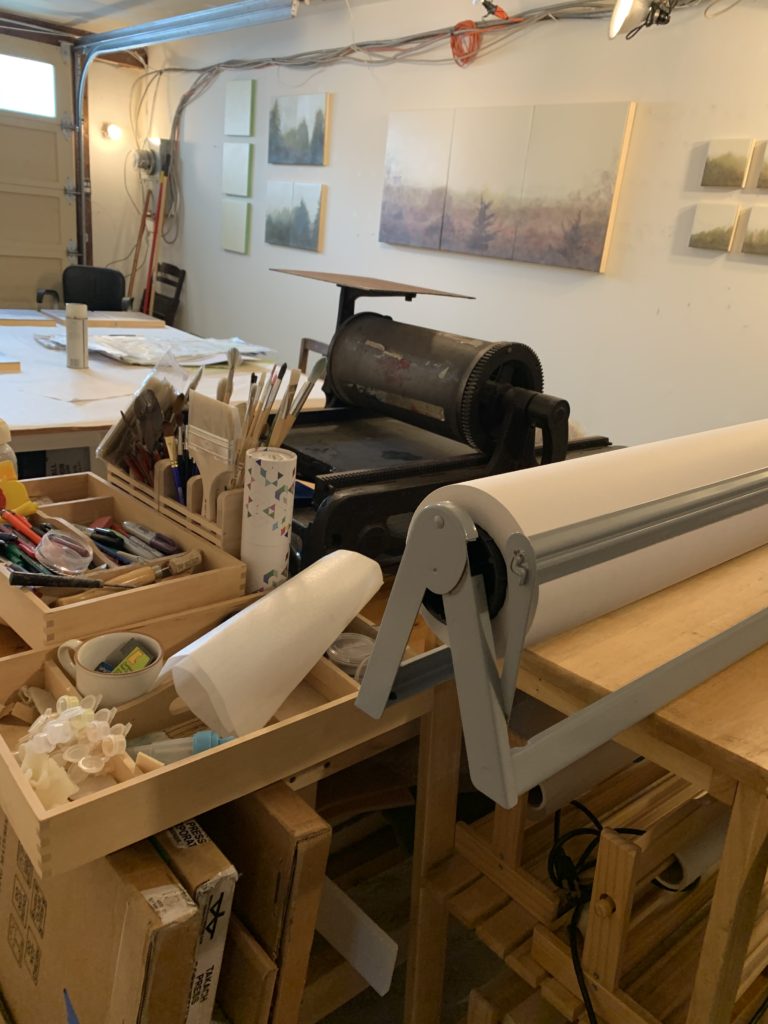
None of this would probably work except I compulsively take photos throughout my day, especially when in family mode adventuring around. I also journal in a notes app on my phone. A few words that catch me, things I’m thinking of, random impressions during the day like “huh this is the 3rd day in a row when the hills look pasty and gray, but its sunny and hot … gray during full daylight” then it later turns into a lithograph series. I also sketch with watercolors regularly. Sometimes just pushing material around because it feels nice. I often print out photos and colors that are catching my eye and just cary them around to look at. Think on whats grabbing my attention and why.
If I’m playing around with a new series, its a little different. I’m not sure why, but I work better on beginning something new at night or the end of the studio day. Even if its on my phone while getting my kids to sleep, I’ll look though photos and notes and begin to reduce whispers of ideas into concepts, and indulge in what’s visually appealing to me. Its important to me to tie materials and processes to the overall content of the work and how I can filter concepts through media; whats gained or lost by it. I also will keep the remnants of my art making if they catch my eye. Sometimes i’ll like the visual quality and years later it will show up in a completely unrelated project. That’s how I arrived at my current encaustic landscapes. It was a random out take from work I did back in 2005 with carbon paper. I harvest all those bits and later use them as seeds. Once I settle on those basic components – I make a plan then get to work in the coming weeks.
MKM: How has your practice changed over time?
KGI: My process is very much linked to my innate personality. Many things have always been here. I was 12 or 13 when I started collecting compelling (to me) images in sketch books. Something I basically still do, only now digitally. I always enjoyed collaging and working with photo source material. Integrating some poetic thought process into my concepts has remained the same. Albeit it was more illustrative when I was young, and more about finding universal themes now. I now have a more interconnected way of working. Perhaps a more holistic way of living within my studio practice. One significant area where I differ is with time management, that changed completely once I had children. I’m more targeted and less wasteful with my days.
MKM: Do you focus on a specific medium or combination of mediums? Which creative medium would you love to pursue but haven’t yet?
KGI: Integrating some aspect of printmaking as a process is integral to my practice. Once I realized it could take me where I wanted to go, I didn’t really falter from print. Although, as a medium it really can incorporate a whole host of other mediums. Painterly approaches, line drawing, photography, sculptural cuts, even all the new maker technology dovetails perfectly with printmaking. Hmm, maybe I picked printmaking for its position as a middle ground? I’ve not worked much with wood, either wood cuts, wood type, mokulito (wood lithography). I’m not sure why. I’ve been looking in that direction lately. I’ve also never made an artists book. I can’t easily wrap my head around it, but keep thinking it could really be a great format to experiment in.
MKM: What themes do you pursue?
KGI: The common theme in most of my current work can be reduced to catching, or translating, light and dimension though pattern. It’s been really wild to see just how endlessly I can play and recombine these basic elements across all the different materials and processes at my disposal.
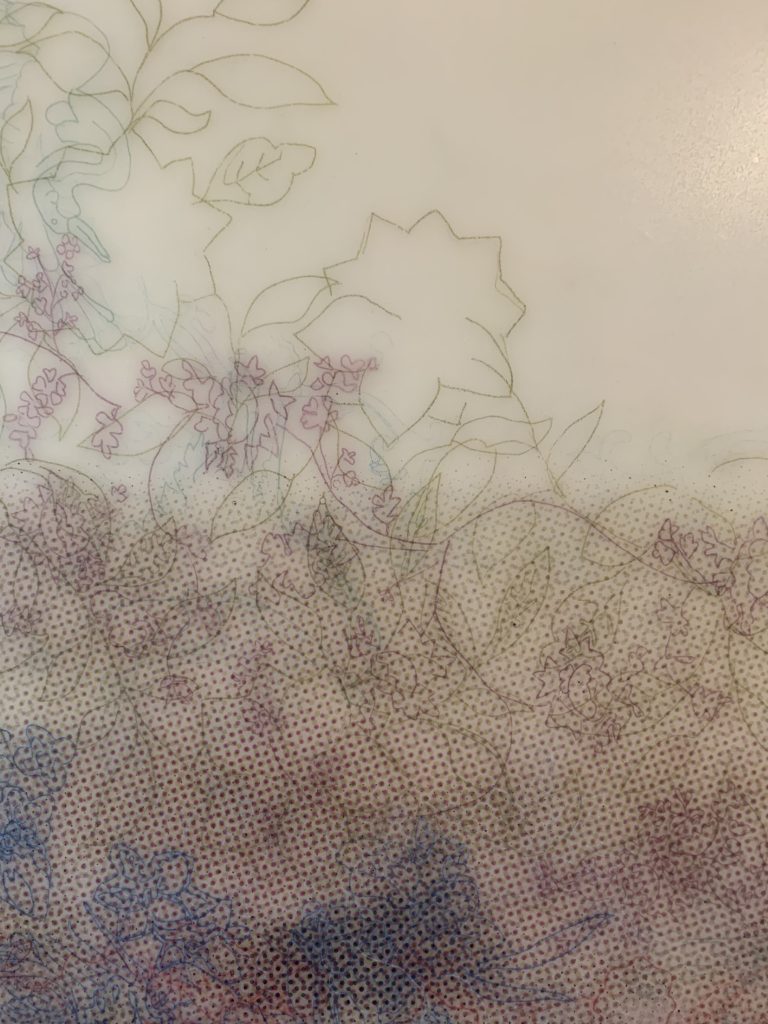
MKM: What is your most important tool? Is there something you can’t live without in your studio?
KGI: Probably my computer. So much of what I do is touched by it. If we entered into a period of global black out, I’m sure I’d figure something else out, but at the moment, I think its a common tool within everything I do.
MKM: Is there an artwork you are most proud of? Why?
KGI: Probably my Variable Horizons work. Its my largest work to date, at 2 ft by 12 ft long, which is a considerable large work for encaustic. It took roughly 4 to 5 weeks of continuous daily work, and I was 7 months pregnant with a 3 year old up in the house. The sheer size and time was an endeavor. But, it’s also the only work I’ve ever made in response to the death of my infant son, about 9 years ago. I was invited to create a work in response to a theme, Corporeal Chronologies. The organizer of the show was familiar with earlier work of mine that was very body focused, he didn’t know that I was working pretty exclusively with landscape imagery. It was a wonderful way to incorporate my current work with such a delicate concept. One that could easily turn dark and abrasive. I was pleased with the way place, and life and grief through time came together in that work.
MKM: What has been a seminal experience?
KGI: For sure becoming a parent, is a major event to most. Since my first baby died as a newborn, I’d say that was a seminal an experience for me, on many levels. It was a reset professionally. I was printing and making art, teaching, and I had been working as a studio manager for an artist of international acclaim. When my son passed away, it all stopped. I stopped making art, I stopped teaching, and I never returned to a full time day job after that. It also opened the world back up to me in a bizarrely fresh way. My role in the world was completely severed and rebuilt from scratch. I was able to grow my studio practice back into my daily life in a way I never was able to do before.
MKM: What art do you most identify with?
KGI: Abstraction and conceptual. People often think I’ll be drawn to representational imagery since I currently work with recognizable landscapes. I find more affinity with the poetic exploration in conceptual work and abstraction.
MKM: What inspires you? Other artists, other women from history, your process, a theme?
KGI: Sudden shifts in light. Driving down a road and having the light flip suddenly.
MKM: Do you have a sense of connection to a particular woman artist from art history?
KGI: Louise Bourgeois. Everything I’ve read on her points to a person of skill, whose tenacity and prolific activity slowly erodes at the life she’s built into. Ultimately really great work is able to emerge.
MKM: Is there a specific work from Louise Bourgeois that you find interesting?
KGI: Her drawings and drypoint etchings. They could easily be overlooked. With the volume of them that exist, they demand to be looked at, given attention. And when you do, all the exquisite subtlety and conceptual interconnectedness comes to light and you cant unsee it.
MKM: Who are your female role models from history or present day?
KGI: Agnes Martin. The rejection of it all. I never see her work as an exploration or justification of gender. I never saw her career as an avenue to fame or celebrity. It was just honest, beautiful art work; and work that was able to rise with success in a very male art world.
MKM: What’s the best piece of advice you’ve been given?
KGI: There have been two that continually inspire, and seem to work for any occasion. When I was working on a print edition with Kay Bradner, she let out “Reckless Abandon!” At the time she said it when using an enormous c-clamp to crack walnuts, because that’s what was handy on her kitchen table. But I find, when used responsibly, it’s often the right rallying cry to make. Plus, it’s good to make do some times without over thinking. The other is “You can boss me around as long as you boss me to victory” a friend exclaimed when given unsolicited advice during a card game. Nothing wrong with taking direction if it helps get you where you want to go. Also, a reminder about remaining humble. Is what I want to suggest really going to bring someone further to their victory? Or, maybe an off-putting remark I received needs to be let go of, because it was never going to serve my initiatives generously.
MKM: What is your dream project? What can we expect from you in the next year?
KGI: My dream? I want to make gigantic wall sized landscape watercolors with hand painted photo halftones. Like, really big. “Only wall big enough is in the de Young” big. Thats a bit far out there. I’m already starting on large watercolors, but not that big yet. They take forever and have zero room for forgiveness. I’m planning to work more on paper this year. Both press work and hand painted work. More seascapes, too.
